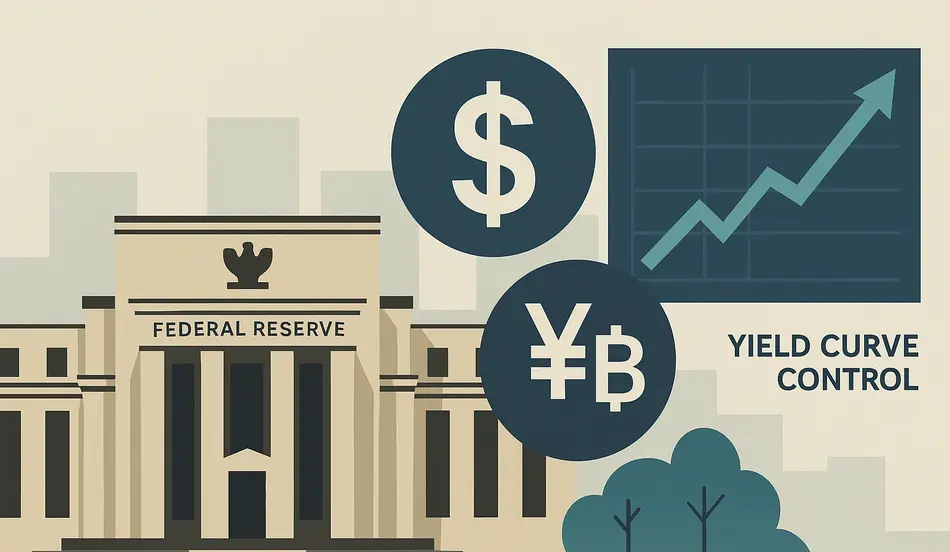Fed Meeting Preview: Setting the Stage for Global Markets
The upcoming Federal Reserve meeting is poised to be one of the most consequential events for global financial markets this year. As investors and policymakers alike await the Fed’s next move, the focus keyphrase Fed meeting is dominating headlines and market conversations. This comprehensive preview explores the expectations for the Federal Reserve, the ongoing trend of dollar weakness, the surge in emerging markets, and the growing discussion around yield curve control. We’ll also examine the impact of recent administration pressure, the appointment of Stephen Moran, and what these developments mean for investors.
Federal Reserve Meeting Expectations: What’s on the Table?
Market participants are closely watching the Fed meeting for signals on interest rates, quantitative easing (QE), and potential new policy tools. With inflation moderating and economic growth showing signs of slowing, the Federal Reserve faces a delicate balancing act. The central bank’s forward guidance will be scrutinized for any hints of a policy pivot, especially as political pressure mounts from the current administration to support job growth and stabilize markets. For a detailed look at the Fed’s policy framework, see the Federal Reserve’s official monetary policy page.
Fed Meeting Preview: Dollar Weakness & Global Shifts
Emerging markets are surging, and whispers of yield curve control are growing louder. Stay strategic—post your job on WhatJobs now and connect with global talent ready for shifting times. Free for 30 days.
Post a Job Free for 30 Days →Dollar Weakness: Trends and Implications
One of the most notable trends leading up to the Fed meeting has been the persistent weakness in the US dollar. A softer dollar has far-reaching implications, from boosting US exports to increasing the appeal of risk assets globally. Currency strategists point to a combination of dovish Fed rhetoric, rising fiscal deficits, and global diversification away from the dollar as key drivers. This trend is particularly significant for multinational corporations and investors with international exposure.
Emerging Markets Surge: Outperformance in Focus
As the dollar weakens, emerging markets have experienced a surge in capital inflows and asset price appreciation. Investors are increasingly attracted to higher yields and growth prospects in countries such as India, Brazil, and Indonesia. The Fed meeting is expected to further influence these flows, as any indication of prolonged US monetary accommodation could extend the rally in emerging markets. For more on emerging market job opportunities, explore WhatJobs Emerging Markets Jobs.
Yield Curve Dynamics and the Prospect of Yield Curve Control
The shape of the US yield curve remains a critical indicator for economic sentiment and policy expectations. Recent flattening has raised concerns about growth prospects, while some market participants are speculating that the Fed may consider yield curve control (YCC) as a tool to anchor long-term rates. YCC, previously implemented by the Bank of Japan, involves targeting specific yields on government bonds to influence borrowing costs and economic activity. The upcoming Fed meeting could provide important clues about the central bank’s willingness to adopt such measures.
Fed Meeting Preview: Dollar Weakness & Global Shifts
Emerging markets are surging, and whispers of yield curve control are growing louder. Stay strategic—post your job on WhatJobs now and connect with global talent ready for shifting times. Free for 30 days.
Post a Job Free for 30 Days →Administration Pressure and the Stephen Moran Appointment
Political pressure on the Federal Reserve has intensified, with the administration urging the central bank to prioritize job creation and economic stability. The recent appointment of Stephen Moran as a key Fed advisor is seen as a move to align monetary policy with broader economic goals. Moran’s background in labor economics and market regulation is expected to shape the Fed’s approach to both interest rates and unconventional policy tools.
Market Pre-Pricing and the Return of Quantitative Easing?
Financial markets have already begun to price in the possibility of renewed quantitative easing, especially if economic data continues to disappoint. The Fed meeting will be closely watched for any signals that asset purchases could be ramped up to support financial conditions. Investors should pay attention to the language used in the Fed’s statement and press conference, as even subtle shifts can have outsized effects on asset prices. For job opportunities in finance, check out WhatJobs Finance Jobs.
FAQs: Fed Meeting
What is the main focus of the upcoming Fed meeting?
The main focus of the upcoming Fed meeting is to assess economic conditions and determine the appropriate stance for monetary policy, including interest rates and potential new tools like yield curve control.
How does dollar weakness impact emerging markets?
Dollar weakness typically benefits emerging markets by making their exports more competitive and attracting foreign investment, leading to stronger economic growth and asset performance.
What is yield curve control and why is it being considered?
Yield curve control is a monetary policy tool where the central bank targets specific yields on government bonds to influence borrowing costs. It is being considered to help anchor long-term interest rates and support economic growth.
Who is Stephen Moran and what is his role at the Fed?
Stephen Moran is a newly appointed advisor at the Federal Reserve, bringing expertise in labor economics and market regulation to help shape the central bank’s policy decisions.
How can investors prepare for the outcome of the Fed meeting?
Investors can prepare by staying informed about Fed policy signals, diversifying their portfolios, and considering the potential impacts on interest rates, currencies, and global markets.
Financial Industry Professional Perspective
Jane Smith, a senior portfolio manager at a leading global asset management firm, shares her perspective on the upcoming Fed meeting: “We’re closely monitoring the Fed’s language around yield curve control and quantitative easing. Our team has adjusted our portfolios to increase exposure to emerging markets and reduce dollar-denominated assets, anticipating continued dollar weakness. The appointment of Stephen Moran signals a potential shift toward more proactive labor market support, which could influence both policy and market sentiment. We’re advising clients to remain nimble, focus on risk management, and be prepared for increased volatility as the Fed meeting approaches.”




